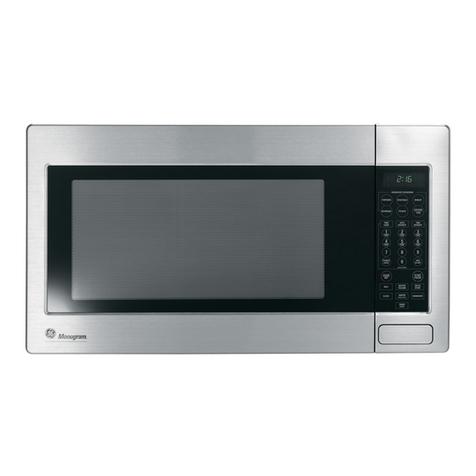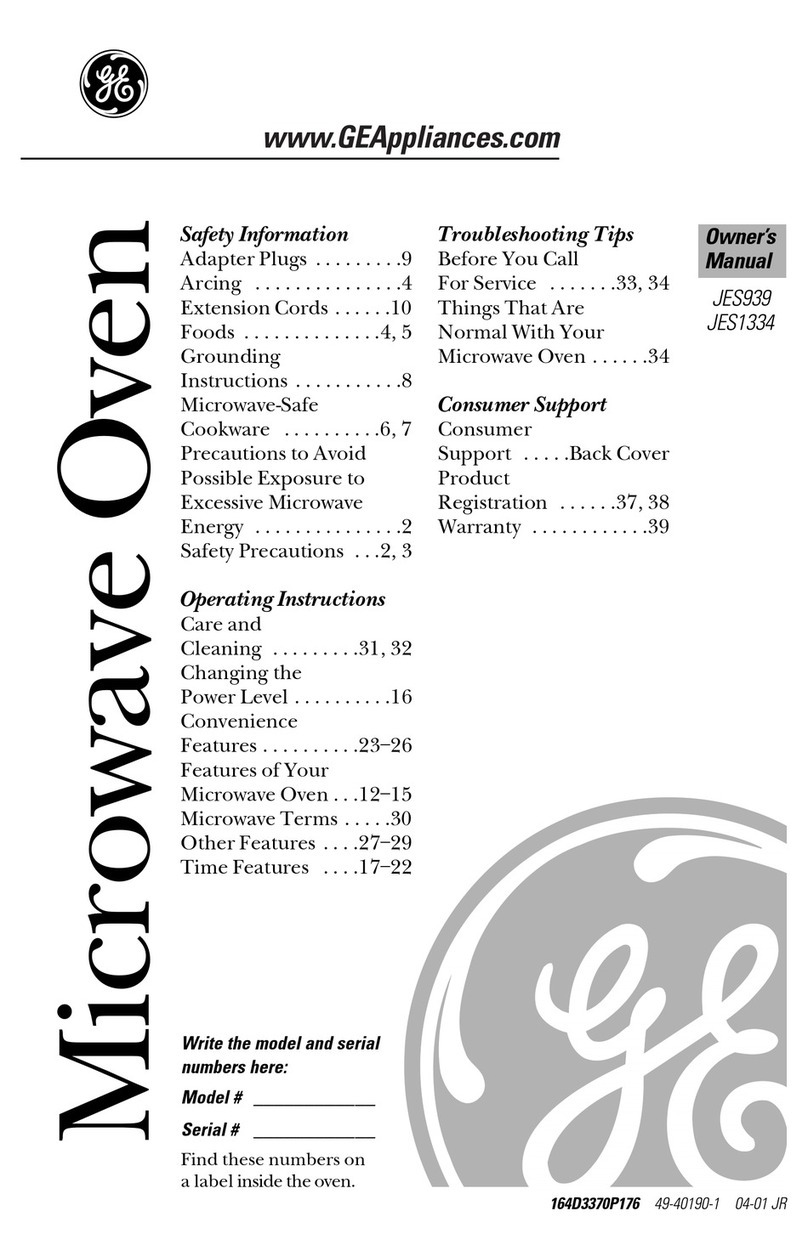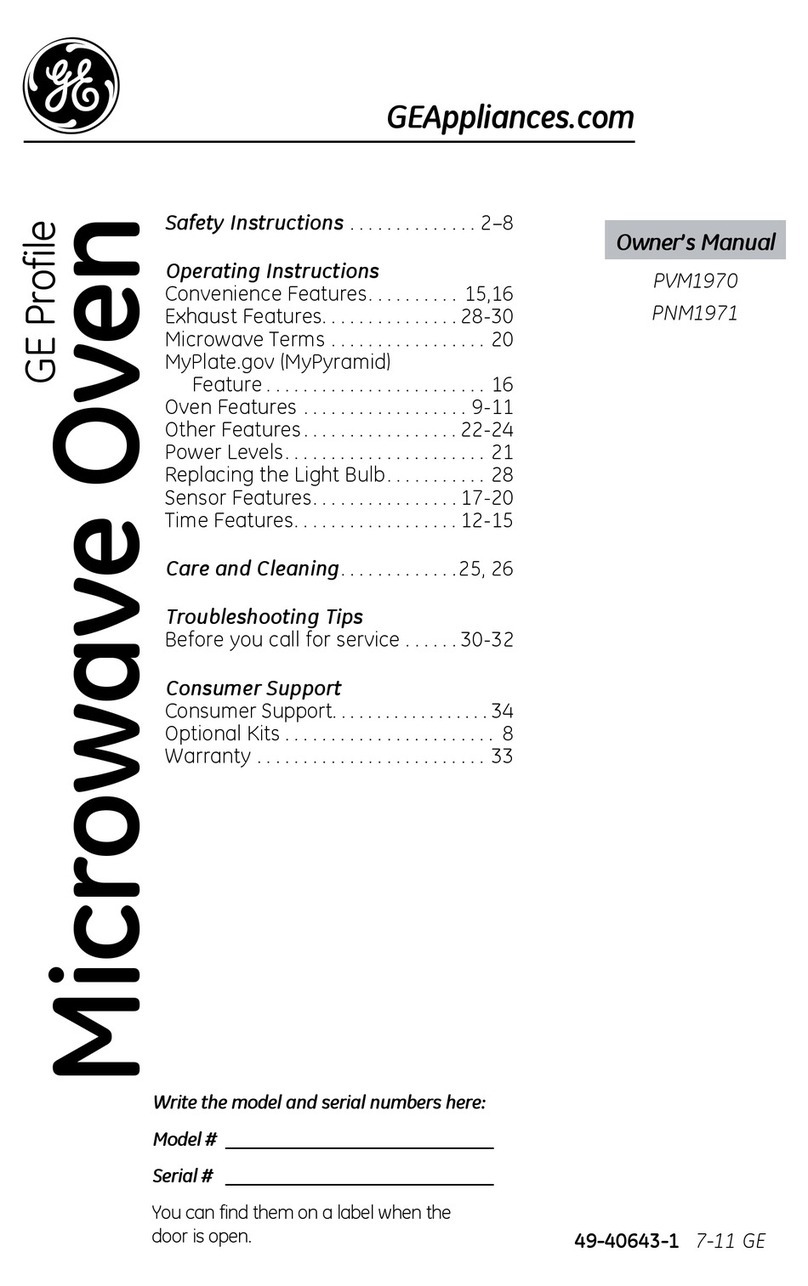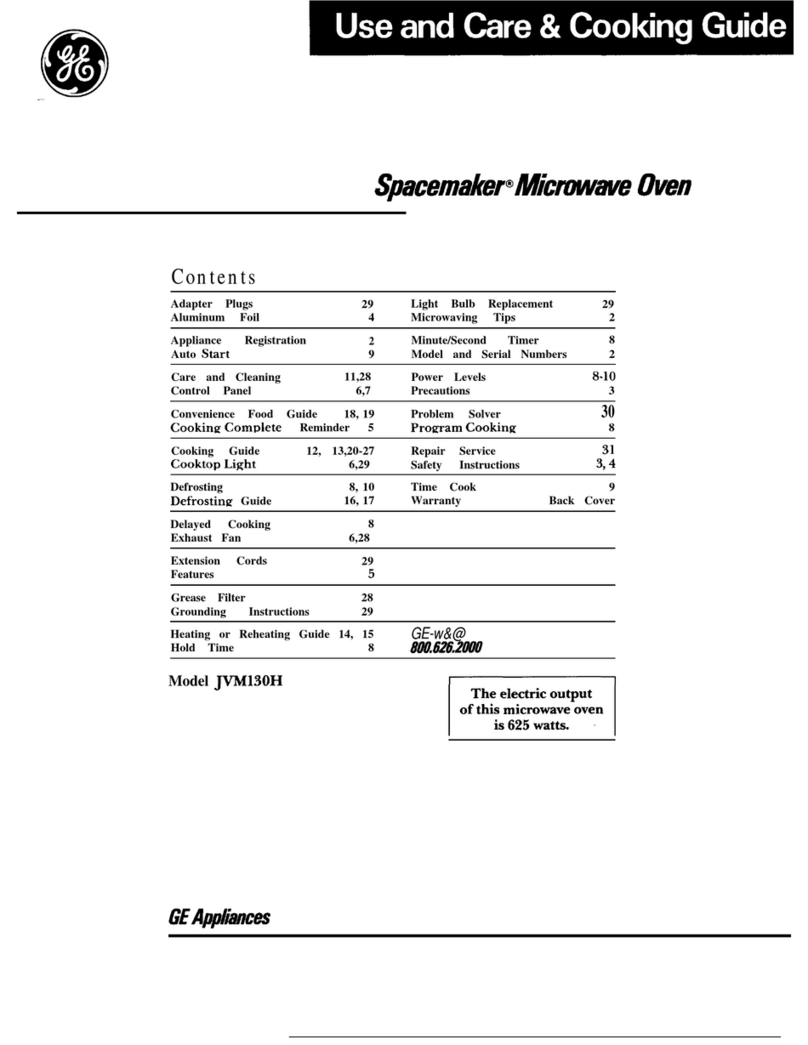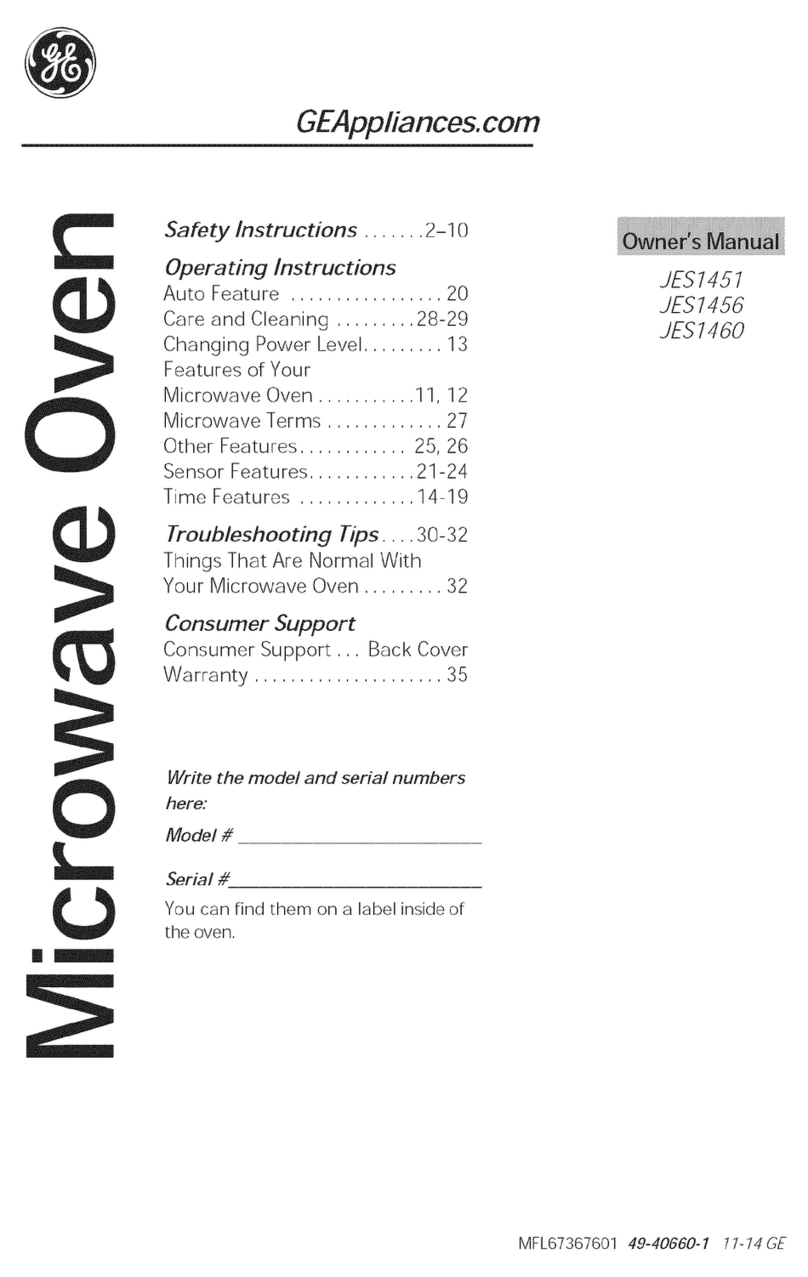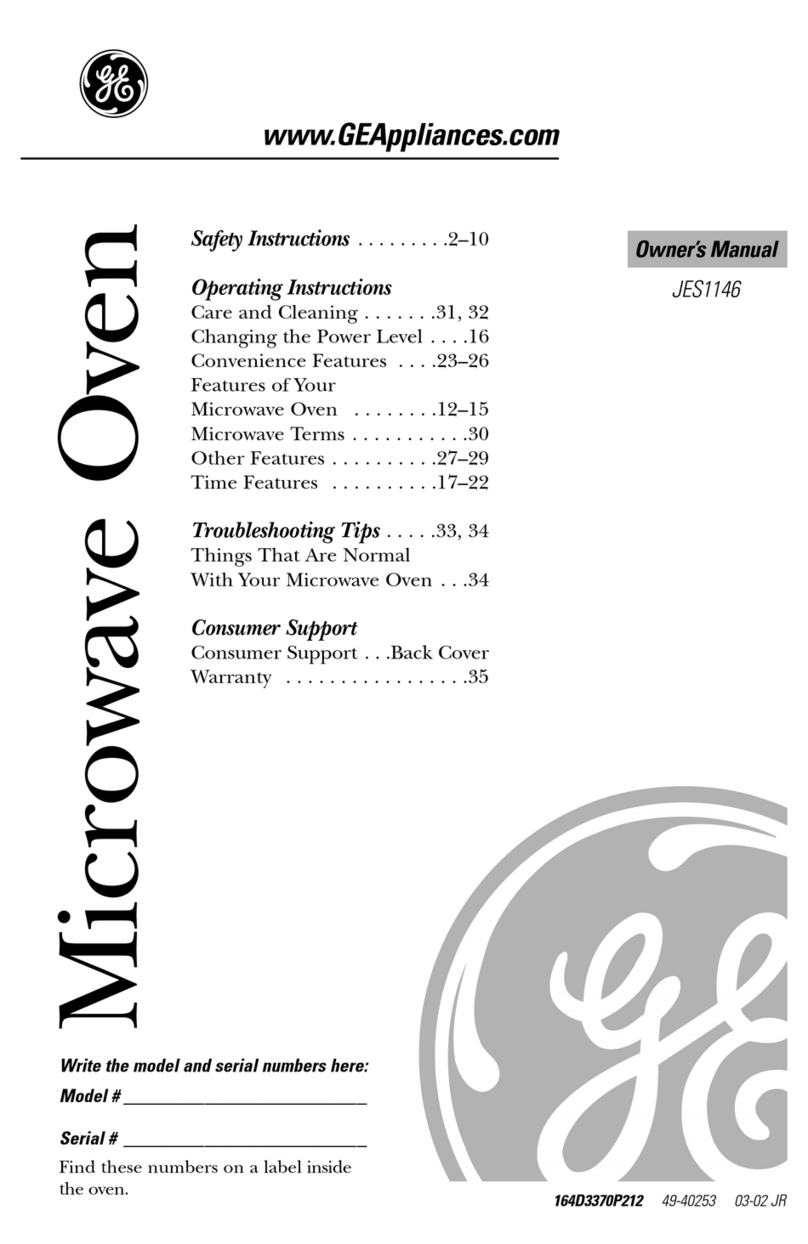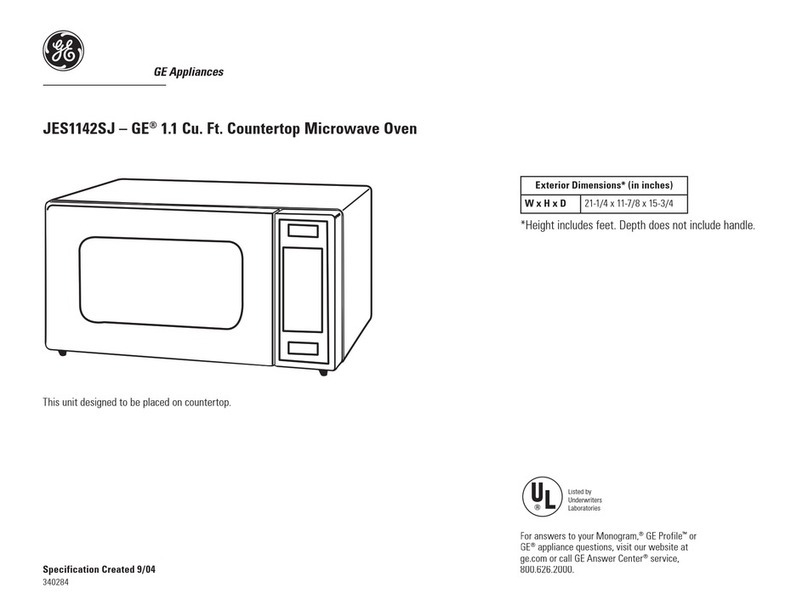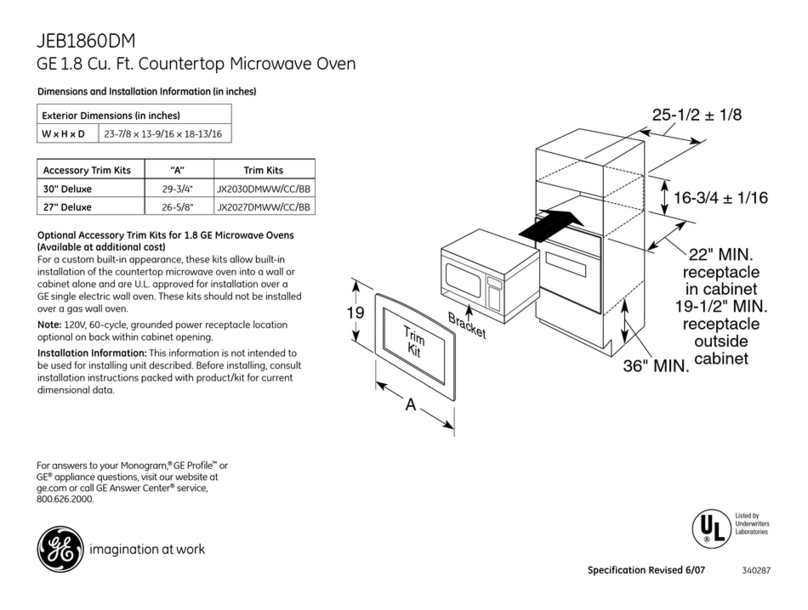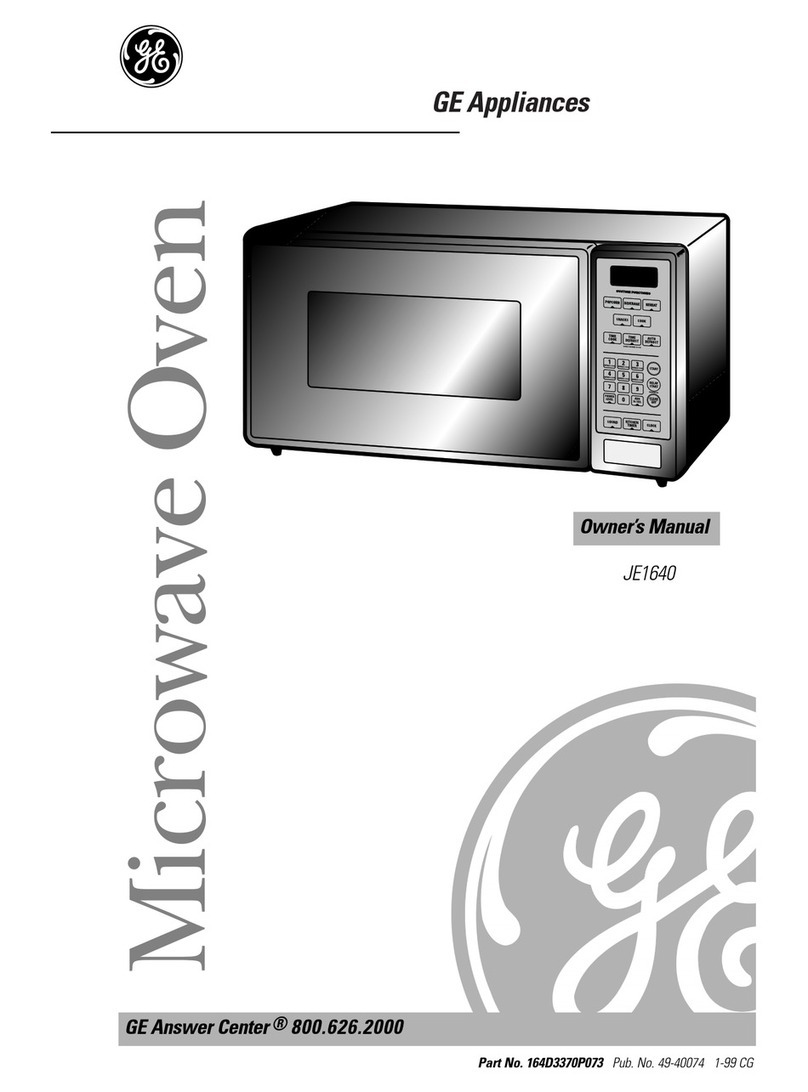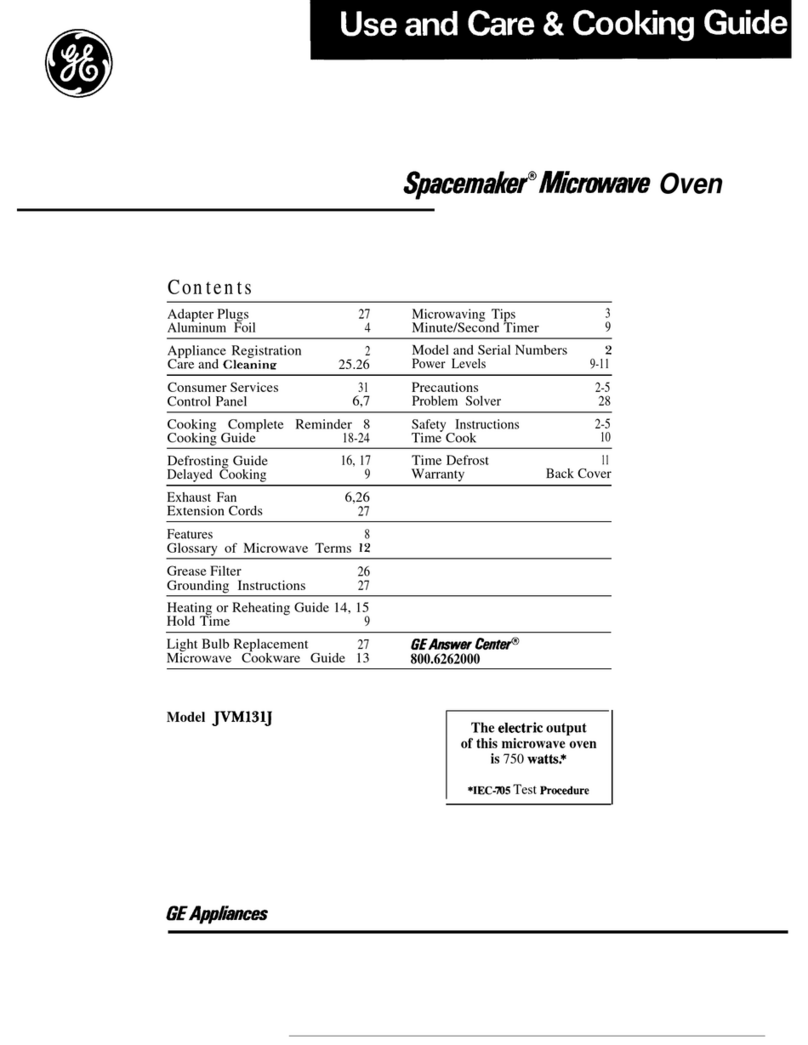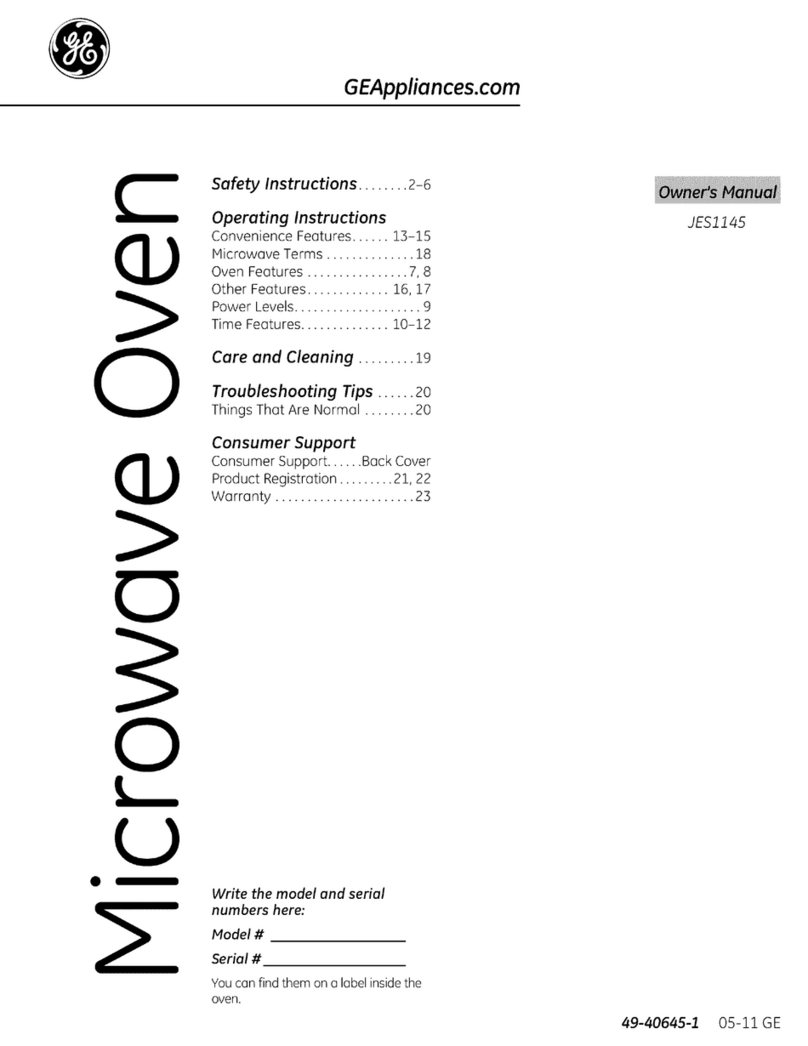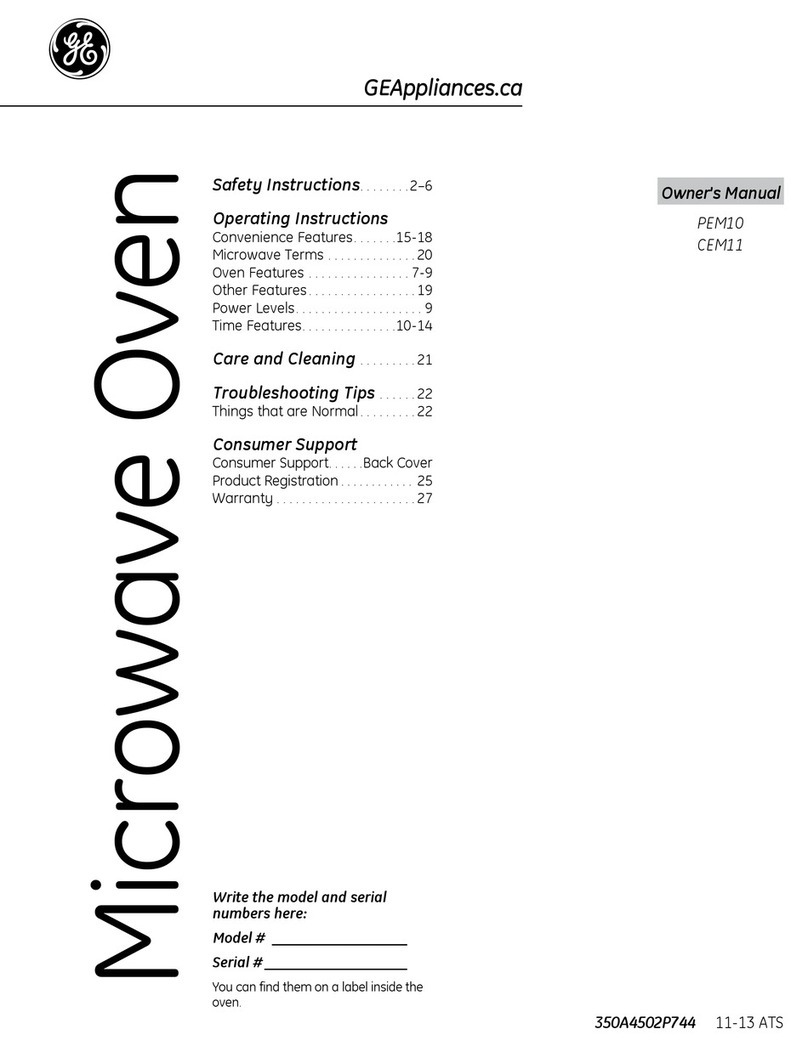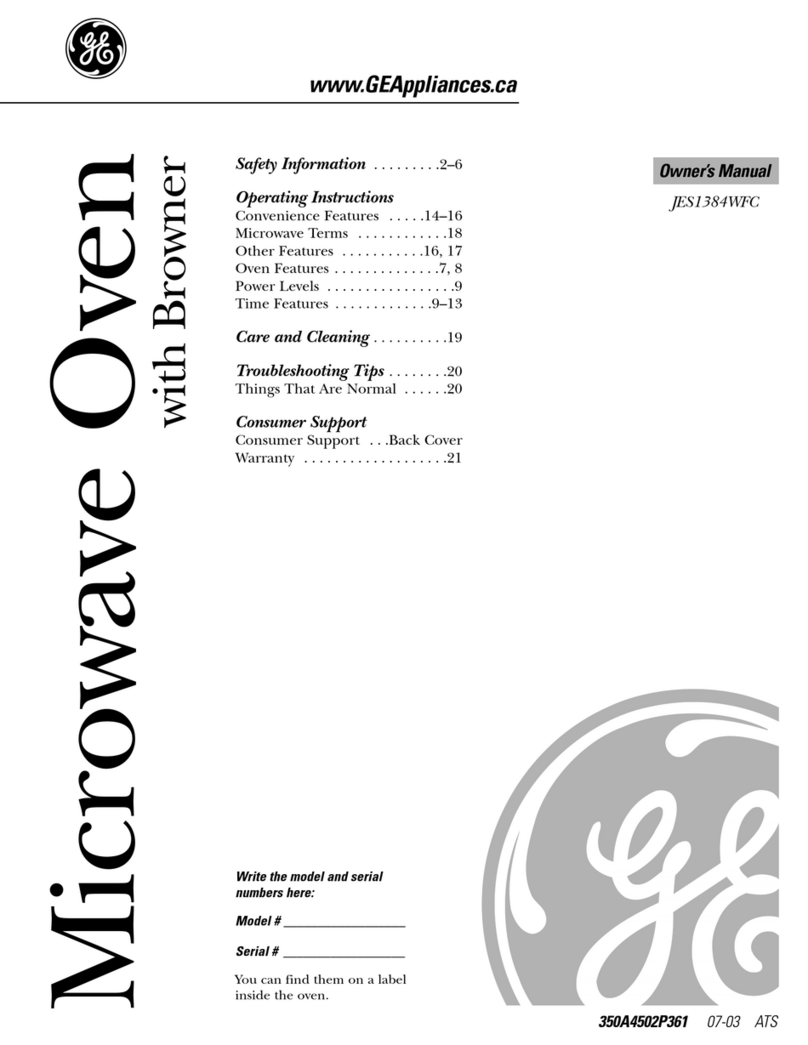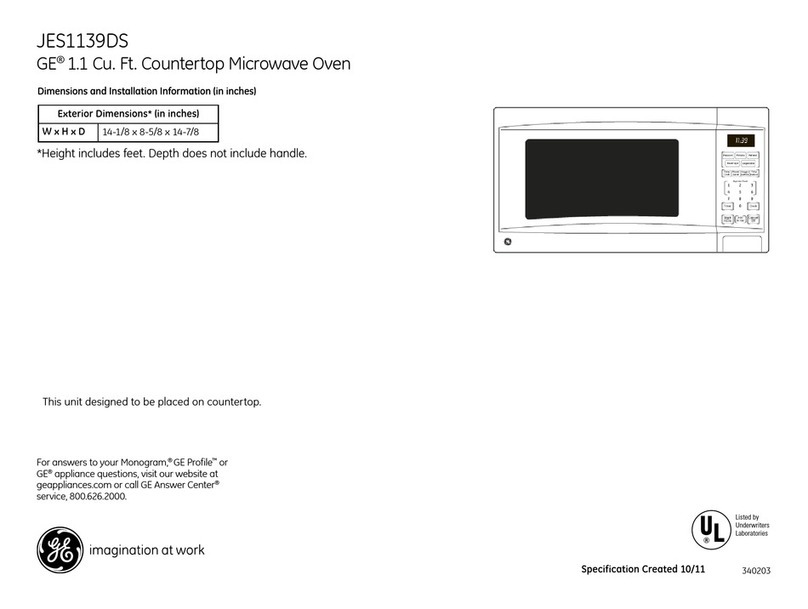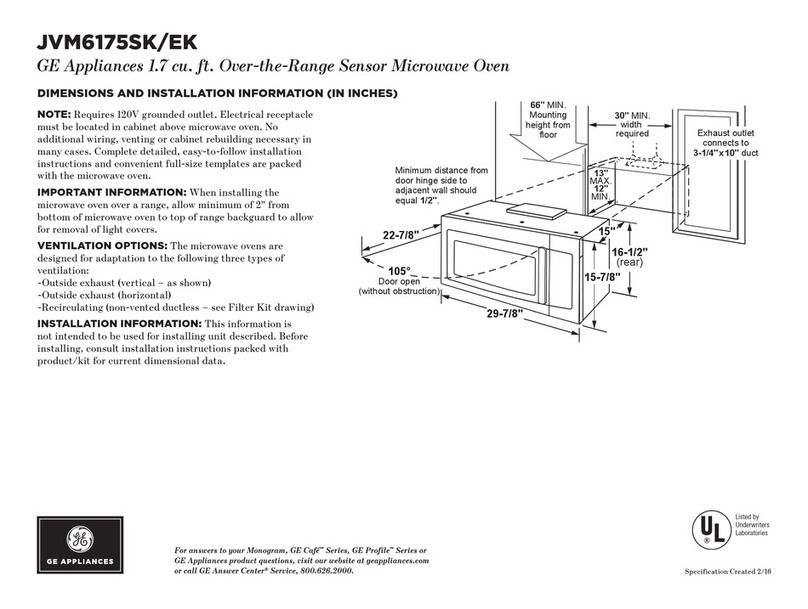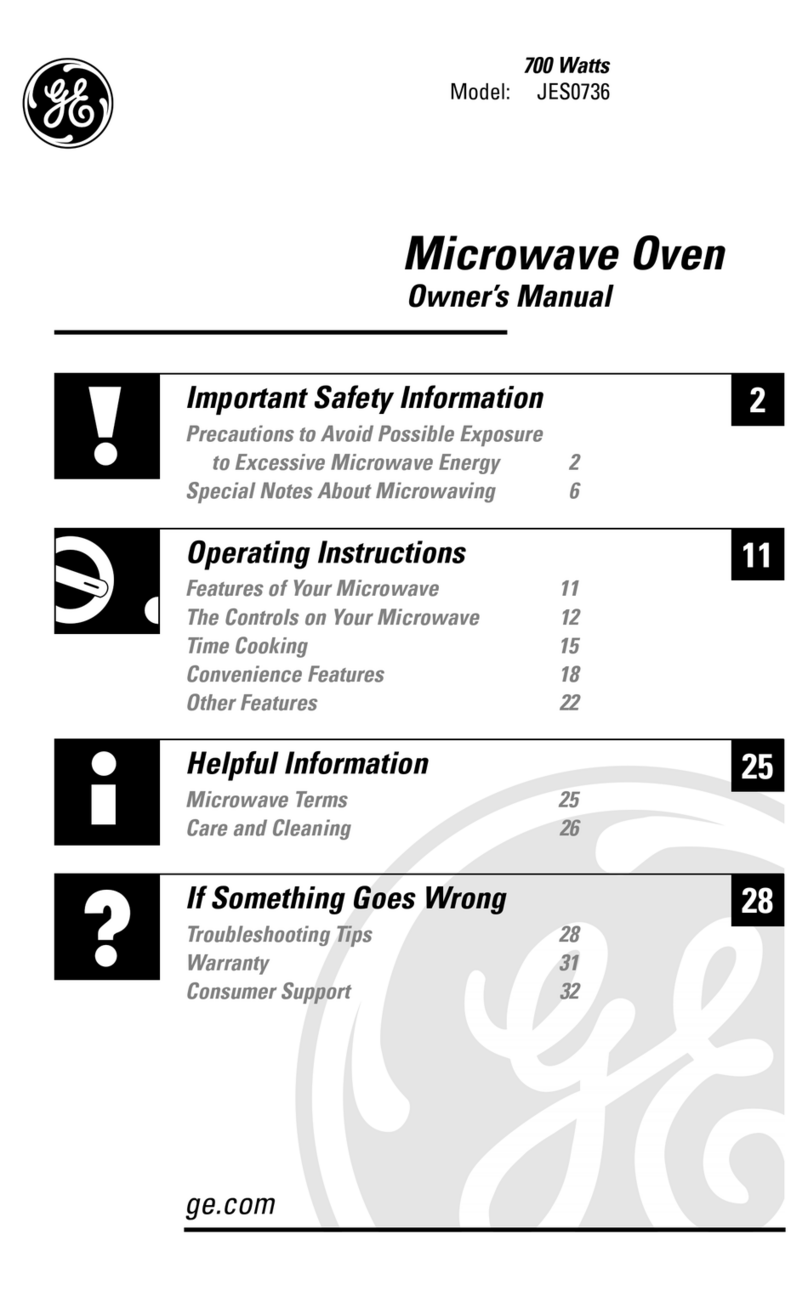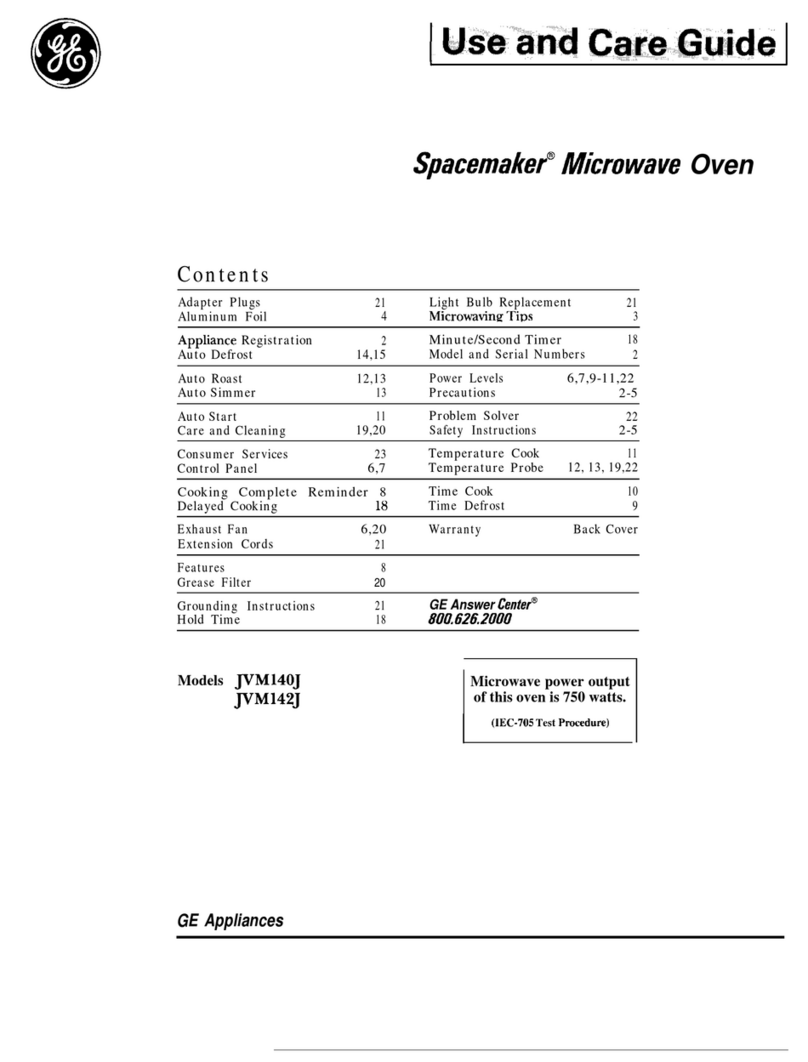YOUR TOUCH CONTROL
The touch control panel allows you to set the oven controls with the
touch of afinger. It's designed to be easy to use and understand. With
your new oven, you have several cooking options. In addition to microwave
or convection cooking, you have combination cooking, which uses both
methods. Also automatic microwave cooking (Auto Cook) and automatic
microwave defrosting (Auto Defrost), and automatic combination
temperature cooking (Auto Roast). Or you may make your own programs
to suit your own cooking needs.
PANEL
°DISPLAY. Displays time of day, time or
temperature during cooking functions, doneness
code words, preheat code words, power level
being used, cooking mode and instructions.
2. CONVECTION COOK. When convection
cooking, touch this pad before entering desired
oven time and temperature.
3. CONVECTION BROIL. Touch this pad
for broiling. Be sure to use spatter shield and
broil pan.
4. TIME COOK I & II. Microwave for a preset
amount of time using automatic power level 10
or change power level after setting time.
5. TIME DEFROST. Gentle thawing at automatic
power level 3, or change power level after
entering time.
6. POPCORN. Touch this pad, then START to cook
prepackaged microwave popcorn weighing 3.0
to 3.7 ounces.
7. AUTO REHEAT. Touch this pad, then START
for quick reheating of prepared foods.
8. NUMBER PADS. Touch these pads to enter time
of day or cooking time, internal food temperature
when using probe, oven temperature, power level,
cooking codes, food weights and broil code.
9. AUTO START/REMINDER. Allows you to
program your oven to begin cooking at a preset
time of day--up to a 12-hour delay. The Reminder
feature can be used like an alarm clock.
10. START. Touch this pad to begin any function.
11. VENT FAN. Touch HIGH, LO or OFF for fan
speed.
12. COMBINATION AUTO ROAST. Touch
this pad and roast by using a combination of
microwave speed and convection browning.
13. COMBINATION COOK. Touch this pad to
either cook by time or internal food temperature
with microwave speed and convection browning
alternating during the cooking cycle.
14. ADD 30 SECONDS. Press this pad to add 30
seconds to the cook time as it's counting down.
15. POWER LEVEL. Touch this pad before entering
another power level number if you want to change
from automatic power level 10 (High) for cooking
or power level 3 (Low) for defrosting.
16. TEMP COOK/HOLD. Use the temperature
probe to cook by using a preset temperature.
When internal food temperature reaches 90°E,
oven shows temperature until preset temperature
is reached and holds temperature for up to
one hour.
17. AUTO COOK. Touch this pad and then
number pad for desired code number, and oven
automatically microwaves at pre-programmed
power levels and determines the proper amount
of cooking time until the food is done and oven
shuts off.
18. AUTO DEFROST. Touch this pad, then code
number and food weight. The oven automatically
sets power levels and defrosting time.
19. MIN/SEC TIMER. This features uses no
microwave energy while it functions as both a
kitchen timer or as a holding period between
defrost and time or temperature cooking.
20. CLOCK. Touch this pad to enter time of day
or check time of day while microwaving. To set
clock, first touch CLOCK pad and then enter time
of day. For example, if time is 1:30, touch number
pads 1,3, and O and "1:30" will appear in display.
Then touch START or CLOCK. If you wish to
reset or change time, simply repeat above process.
21. CLEAR/OFF. When touched, it stops the oven
and erases all settings except time of day.
22. LIGHT. Touch ON to turn on hood light. Touch
NIGHT to turn on night light.
8
